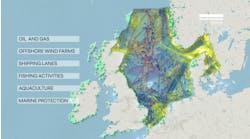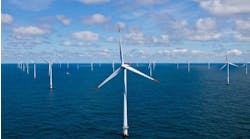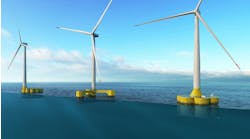New floating wind platform technology uses enhanced mooring design
Offshore staff
DUBLIN, Ireland — Gazelle Wind Power, the developer of a modular floating offshore wind platform, has released its third-generation technology.
The company’s enhanced design aims to address the primary challenges facing the offshore wind industry, such as cost, supply chain bottlenecks and sustainability, by providing a lightweight, cheaper design that minimizes the impact on fragile marine environments while using existing port infrastructure.
As a third-generation technology, the company says the platform delivers enhanced mooring innovation that enables serial production. The platform makes first-generation technology—which was primarily designed to float and survive harsh ocean conditions—obsolete and improves on second-generation designs that are focused on industrialization.
Instead, Gazelle’s platform moves away from archaic models that are stationary, heavy, bulky and difficult to assemble and transport while reducing costs by 30% compared to conventional semisubmersible designs. Part of this improvement comes from the reduction in steel versus traditional offshore platforms. For example, a 1-GW offshore wind farm using Gazelle’s design would save 71 kt of steel and reduce emissions of about 100 kt of CO2.
The company said the platform can be quickly and simply installed at project sites because it requires no specialist cranes or vessels and features a design using globally available components and a modular assembly process.
The platform’s geometry provides reduced draft in port, which means it floats higher in the water enabling the use of shallow ports with high stability in towing and wet storage. Pivoting arms allow the platform to move with the wind, waves and tides that result in lower forces, enabling a lighter and cheaper structure.
The Gazelle platform utilizes a dynamic mooring system representing a paradigm shift from an active ballast to a natural, passive system that balances forces and motions through a counterweight, keeping the turbine pitch low and improving operational efficiency. Vertical mooring lines attached to the pivoting arms reduce the platform’s environmental footprint by minimizing impact and allowing for a 75% reduction in mooring length when compared to semisubmersibles with catenary mooring in depths of 100 m or more.
04.26.2023



